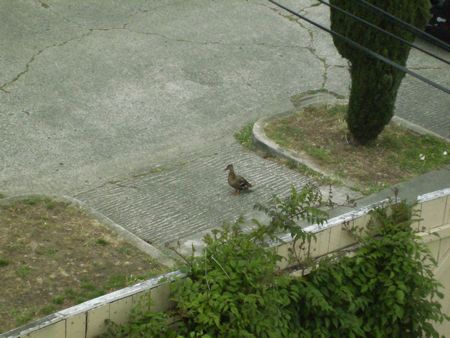We stopped to buy some fruit along state route 58 over Tehachapi Pass. I found a postcard showing the Tehachapi Loop, a point where the old Southern Pacific (now Union Pacific) railroad line passes over itself as it ascends the grade through the Tehachapi Pass. And our map showed an overlook just off the highway where we could see the Tehachapi Loop.
We got off the highway, drove down a couple of miles of winding mountain road, and saw a couple of pull-offs, one on each side of the road. Two cars were parked there. A man and a boy in one of the cars looked at us as we drove up. Carol wondered aloud if they were having troubles and were hoping we could help them, but I wondered inside if maybe they were rail fans.
I walked over to the side of the road where I could see the Loop. The boy was clutching some radio or something to him, and I realized it was a scanner tuned to the railroad’s frequency. “Is there a train coming soon?” I asked him. “I see you’ve got a scanner.” He said there was, that it had just passed the nearest detector, and was getting close.
Pretty soon I could hear the locomotives; then I could see them; they looked to be three GE Dash 9s pulling a train of empty double-stack cars. The locomotives moved around the loop until they passed over the tail end of the train following on the track behind and beneath them. In the photo below, you can see the locomotives at the near point on the track, and to the far right you can see the nondescript-looking empty double stack cars on the loop behind and beneath them:
The boy was standing a little way down the road with his father, and an older man whom I assumed to be his grandfather. The father had a big videocamera. When the train had gone, I said, “Did you get a good video?” “Oh yeah,” he said, “not as good as some of my others because the cars were bare. When they have double-stacked containers, you can see it much better.” I told him we thought ourselves lucky because we just happened to show up at the right time as we were driving to North Carolina. We chatted for a minute. “Have a good trip,” said the grandfather as we all drove away.



